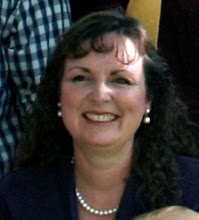I want to share several free online courses for the beginning genealogists. Education is the key to keeping up with the times in the ever changing field of genealogy and family history. Now, education does not have to be expensive, in fact today I will mention only online classes that are free.
BYU offers free enrichment courses through their
Independent Study Program. The courses offered here fall under the categories of Introduction to Family History & Genealogy, Record Types in Family History & Genealogy and Regional & Ethnic Research in Family History & Genealogy. Under each of these topics are listed the classes themselves. Under Introduction into Family History is found: Providing Temple Ordinances for Your Ancestors, Introduction to Family History Research and Helping Children Love Your Family History. Under Record Types in Family History is found; Family Records, Vital records and Military Records. Under Regional & Ethnic research is found seven classes pertaining to research in France, six classes for research in Germany, one class for research of Huguenots and five classes for research in Scandinavia.
More free online classes are located at:
FamilySearch.org. There are seven classes in the Family History Lesson Series they are: Perform Descendancy Research, Conduct Family History Interviews, Involve Children and Youth in Family History, Write a Personal History, Create a Famiy History, Involve your Extended Family in Family History and Use the Internet for Family History Research. The great thing about these lessons is that they can be printed out or downloaded onto your computer.
Another great spot it the website for
The Center for Family History & Genealogy. The Center is located on the BYU campus and provides free online tutorials to students. There are 8 lessons associated with the Religion 261 class and they are: Gather Information, PAF, FamilySearch.org, GEDCOMs, Family History Centers, Temple Ready and Sharing. Also offered from this website are Script tutorials. These tutorials will help you learn to read old documents. The lessons are available for the following languages: English, German, Dutch, Itilian, French, Spanish and Portuguese.
For those who have access to
New Family Search can also find free lessons at the new site. On the main welcome page is a list of options, the last option is "Help Center". Click on "Help Center" and a new window will open. Next look at the tabs located at the top of the new window. Click on the tab that says, "Training & Resources". The top selection that appears will be E Learning Courses. There are 9 courses offered entitled: Overview, Registration, View & Add Information, Make Corrections, Organize Information, GEDCOM Files, The Temple Process, Available Help and The Helper Function.
 To print a pedigree chart in PAF you must first highlight the individual you would like to be the first person on the chart. Usually you will begin with yourself. Once this person is highlighted you need to click on the little printer icon found on the top menu bar. It is the fifth icon from the left. Once you have clicked on the printer icon a "Reports & Charts" box will appear. There are many tabs at the top. Select the "Pedigree" tab. You will verify that the starting person is whoever you highlighted. The type of chart is usually a "single" chart. Chart options include a choice of 4, 5 or 6 generation chart. "Other Options" include "Prepared by". Always click "Prepared by"so that your name and contact information will be printed on the bottom left hand corner.
To print a pedigree chart in PAF you must first highlight the individual you would like to be the first person on the chart. Usually you will begin with yourself. Once this person is highlighted you need to click on the little printer icon found on the top menu bar. It is the fifth icon from the left. Once you have clicked on the printer icon a "Reports & Charts" box will appear. There are many tabs at the top. Select the "Pedigree" tab. You will verify that the starting person is whoever you highlighted. The type of chart is usually a "single" chart. Chart options include a choice of 4, 5 or 6 generation chart. "Other Options" include "Prepared by". Always click "Prepared by"so that your name and contact information will be printed on the bottom left hand corner.
